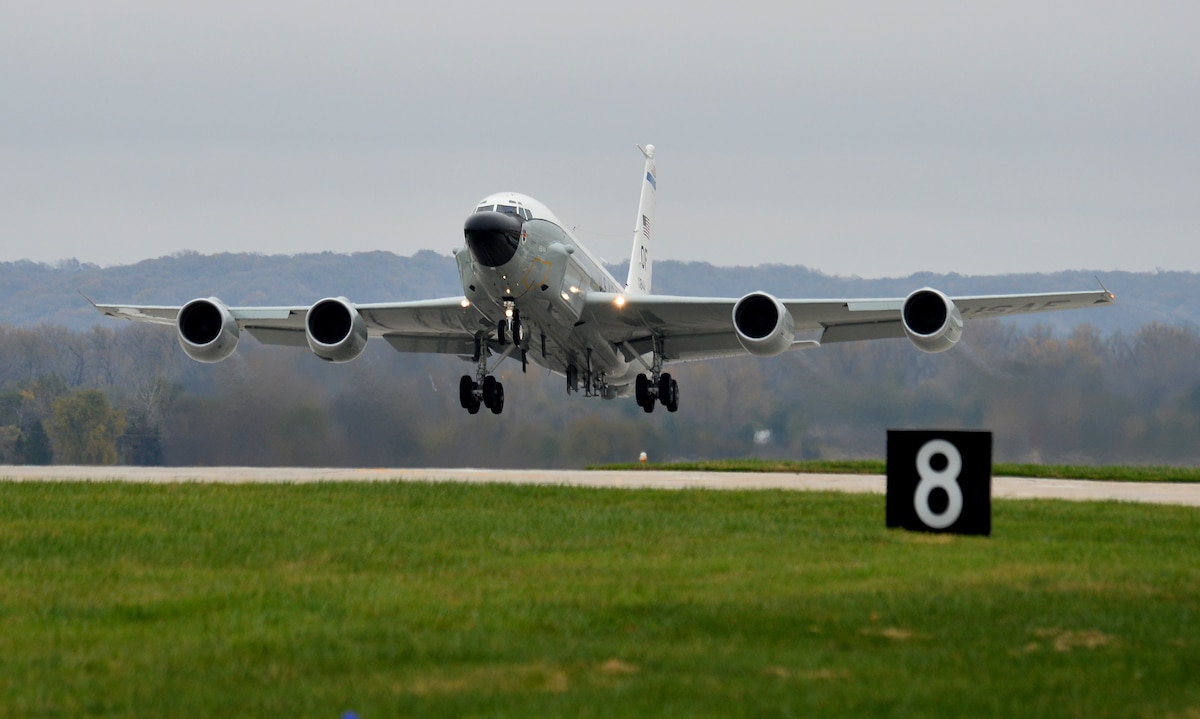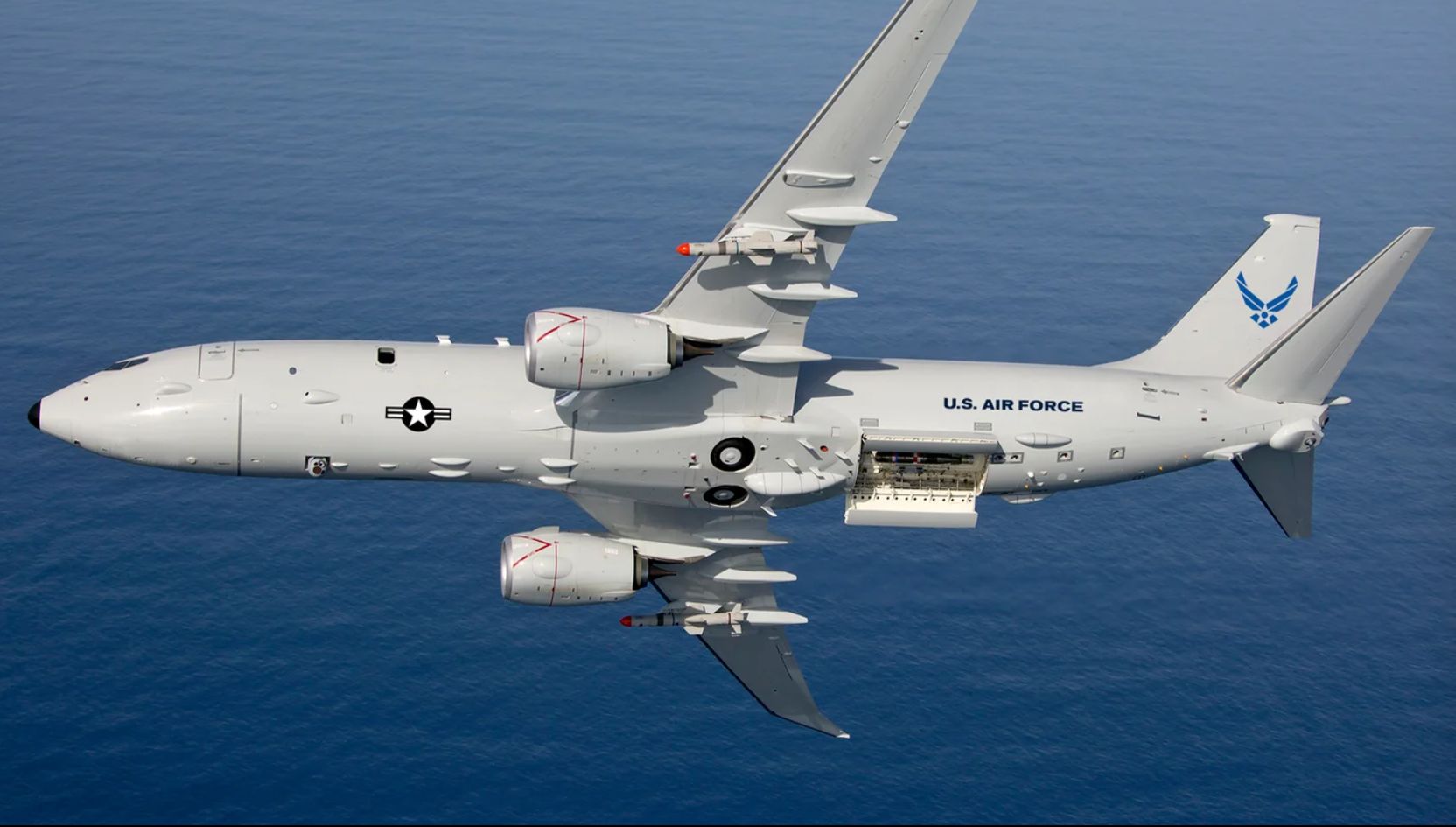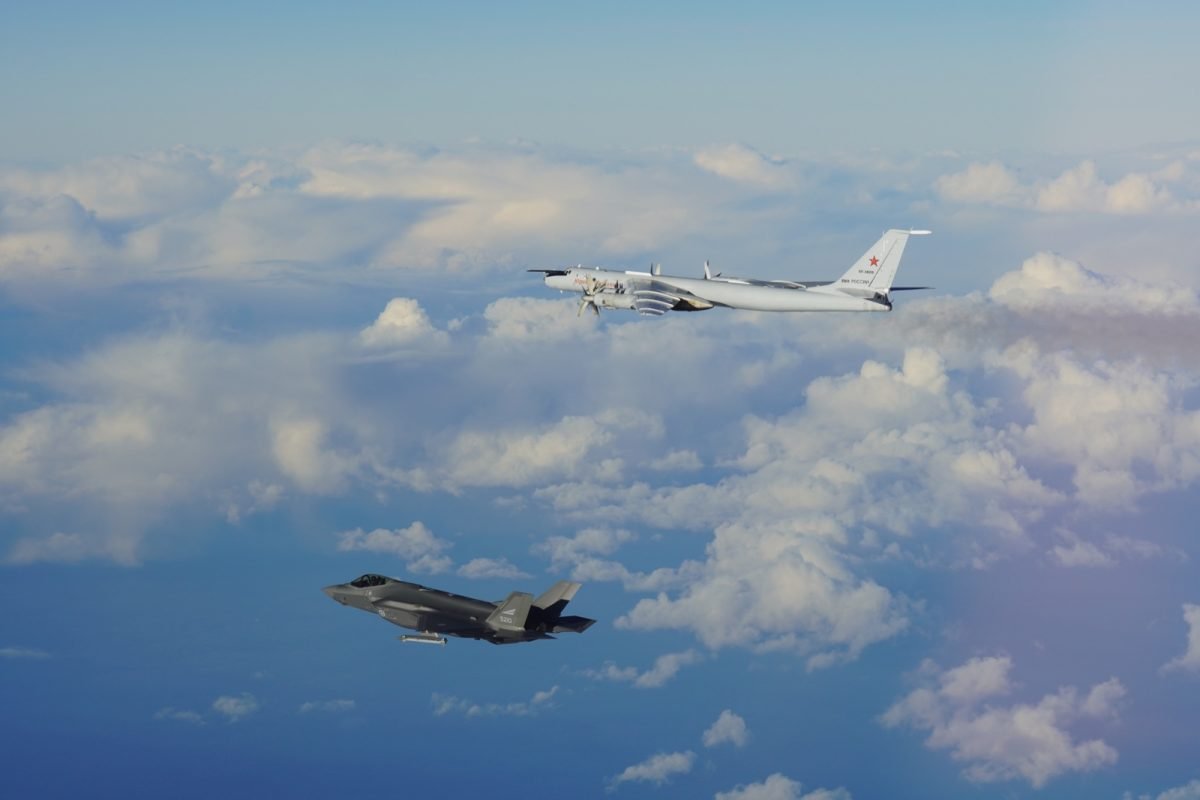Advanced US spy planes, including the RC-135 Rivet Joint and P-8 Poseidon, are extensively deployed to keep an eye on Russia and China. However, with drug cartels and illegal immigrants now flagged as one of the biggest threats by US President Donald Trump, these spy planes are flying sorties near Mexico.
As part of the Pentagon’s effort to secure the southern border at President Donald Trump’s direction, the US military is using the RC-135 Rivet Joint and UD Navy P-8 Poseidon aircraft to conduct intelligence, surveillance, and reconnaissance (ISR) missions along the southern border of the United States and off the coast of Mexico.
Flight tracking data indicated a US Air Force (USAF) RC-135 Rivet Joint, a signals intelligence aircraft, conducted missions off the coast surrounding Mexico’s Baja Peninsula on February 3 and 4. Additionally, an RC-135 was also deployed to conduct ISR flights off the coast of Mexico.
According to the flight tracking data, the aircraft with tail number 64-14845 appeared to have remained in international airspace while operating close to Mexico.
In addition to the Rivet Joint, the US has also deployed the P-8 Poseidon for the same purpose.
Reports indicate that several sorties have been flown along the border from Florida, California, and Davis-Monthan Air Force Base, Arizona. The missions, ostensibly meant to take imagery of the border, have also been acknowledged by the US Department of Defense (DoD).
These deployments come as US President Donald Trump has waged a war against illegal immigrants and Fentanyl coming from Mexico. Earlier this month, Trump slapped additional tariffs against Mexico as punishment for its inability to control the flow of immigrants and drugs.
The tariffs were staved off for a month after Mexico President Claudia Sheinbaum told the US President on February 3 that her country would send 10,000 National Guard troops to its northern border.
Last month, the US had also announced that it was sending troops to secure the US-Mexico border. At the time, a senior US military official hinted that cutting-edge intelligence-gathering aircraft could be deployed.
On January 22, the senior military official told reporters, “There might be some additional airborne intelligence, surveillance, and support assets that would move down to the border to increase situational awareness.”
Although the Pentagon or the White House have not acknowledged that the RC-135 spy planes have been deployed to gather intelligence at the porous border, the US Northern Command announced on February 4 that it had assigned 140 military intelligence personnel as part of the border mission.
“These intelligence personnel will provide full motion video analysis, counter network analysis, and Spanish language translation to the U.S. Border Patrol Office of Intelligence,” NORTHCOM said in a news release.
Meanwhile, Mexico began deploying the 10,000-strong border troop as promised to the US in exchange for deferring US President Donald Trump’s 25% tariff on exported goods.
“The deployment has already started,” Mexican President Claudia Sheinbaum told reporters a day after announcing a last-minute deal with Trump to tighten measures against illegal migration and cross-border smuggling of the drug fentanyl.
These Spy Planes Often Fly Missions Near Russia & China
The deployment of the Rivet Joint along the Mexico border is significant because it is fairly rare.
The aircraft is one of the most advanced and potent intelligence-gathering aircraft in the US inventory. It is equipped with numerous signal intelligence (SIGINT) devices that are designed to identify and intercept electronic transmissions, including conversations. The plane can also geolocate and classify the emitters—from radars to radios—that are generating those signals.
The vast communications array of the Rivet Joint also enables data to be transmitted in almost real-time to nodes worldwide and/or to adjacent units in the field for additional use and distribution.
These aircraft have been extensively deployed to gather intelligence from strategic theatres. In April 2022, for instance, two RC-135S aircraft reportedly flew toward Russia’s east coast on a mission to monitor the test of Russia’s new Sarmat ICBM.
Moscow has long claimed that the RC-135s are airborne nearly 24×7 collecting electronic intelligence on Russian radars and keep an eye on Russian territory to help Ukrainian military operations.
Russia claims that the intelligence collected by the aircraft helps Ukraine plan its naval drone strikes on Crimea and Moscow, receive targeting data, and prepare for Russia’s periodic missile barrage.

Since these ISR planes are designed for various forms of eavesdropping on radar, radio, and communications emissions, they have also been deployed to the disputed South China Sea to sneakily collect intel on China.
Citing open-source tracking data, Newsweek reported last month that the RC-135 flew several spying missions near the Chinese coast.
One such deployment almost resulted in an accident. In December 2022, a US Air Force (USAF) RC-135 aircraft was forced to conduct “evasive maneuvers” to “avoid a collision” with a Chinese J-11 fighter of the People’s Liberation Army Navy (PLAN) that had approached within 10 feet (3 meters) of the US plane over the South China Sea (SCS). A video of the incident showed the Chinese fighter closely approaching the American aircraft on its left before briefly cutting in front of it and veering away.
A similar incident was reported in May 2023, with the US military announcing that a Chinese fighter jet conducted an “unnecessarily aggressive maneuver” during an intercept of a US spy plane in international airspace over the South China Sea.
Needless to say, the Rivet Joint is a frequent visitor to the Indo-Pacific region as well as the Ukraine War theatre.
The deployment of P-8 to the Mexico border is also just as significant as that of the RC-135, if not more. The P-8 aircraft has turrets equipped with infrared and electro-optical video cameras and considerable SIGINT capabilities.
The P-8A entered service in 2013 and has since become one of the most successful maritime patrol aircraft globally. Its customers include India, South Korea, and Australia in the Indo-Pacific.
The aircraft has also been deployed to China’s backyard on multiple occasions. In November 2024, it transited the Taiwan Strait in international airspace as part of the US commitment to the Free and Open Indo-Pacific region.
Notably, the P-8A, operated by the US and allies, has also engaged with Chinese fighter jets in the region. For instance, a Chinese J-16 fired a dazzler at a P-8 belonging to the Royal Australian Air Force (RAAF) over the South China Sea. The incident triggered a diplomatic spat between the two sides, as previously reported by EurAsian Times.

The P-8 is also operated by India and is used to keep an eye on Chinese forces, especially as Beijing is expanding its naval presence in the Indian Ocean Region.
In addition to China, the P-8A has also been deployed to snoop on Russia, with multiple instances involving its interception by Russian fighter jets. Previous reports suggested that the aircraft had aided Ukraine in attacking and sinking the Russian missile warship Ivanovets.
Earlier, the aircraft was unofficially credited for aiding the Ukrainian forces to sink the Russian cruiser Moskva in April 2022. The P-8 is said to have become the eyes and ears of the Ukrainian forces in its ongoing battle, significantly boosting the military’s situational awareness.
The deployment of the two aircraft, often deployed to gather intelligence on Russia and China, to the Mexico border is intriguing and certainly underscores that Donald Trump means business.







